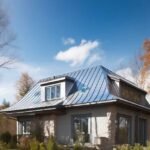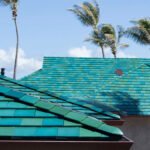 Photo by Binyamin Mellish from Pexels
Photo by Binyamin Mellish from Pexels
When selecting a roof for your home, there are several factors to consider, including how long it will last, how much it will cost you in energy bills, aesthetics, and maintenance, notes The Maryland and Delaware Management Solutions. Whether you’re starting from scratch, fixing up an old home, or just wanting to make things a bit more modern, you need to know what you’re getting into with different roof types. In this article, let’s explore various roofing materials, their benefits, and drawbacks.
Asphalt Shingles: The Most Popular Choice
Asphalt shingles stand as the most widely used and best roofing materials, primarily due to their affordability. Their cost-effectiveness makes them an attractive option for budget-conscious homeowners. Plus, they are relatively easy to install, which helps reduce labor expenses. This ease of installation, coupled with the wide array of colors, styles, and textures available, allows for versatile architectural matching. With proper maintenance, asphalt shingles can provide a decent lifespan of 15 to 30 years.
Asphalt shingles are best suited for Homeowners seeking an affordable and versatile roofing solution, particularly in moderate climates without extreme weather conditions. However, they are not the most durable, being susceptible to damage from high winds and extreme temperatures. Their lifespan is also shorter compared to premium materials like metal or tile. Furthermore, environmental concerns arise from their limited recyclability, contributing to landfill waste.
Metal Roofing: Durable and Energy-Efficient
Metal roofing offers exceptional longevity, often lasting 40 to 70 years, making it a highly durable choice. Its energy efficiency is another significant benefit, as it reflects sunlight, resulting in reduced cooling costs. Metal roofing also exhibits excellent weather resistance, effectively withstanding rain, snow, and high winds.
It is also considered eco-friendly, frequently made from recycled materials and fully recyclable at the end of its lifespan. However, metal roofing comes with a higher upfront cost compared to asphalt shingles. It can also be noisy during hail storms or heavy downpour unless properly insulated. Installation is complex and requires skilled professionals, which increases labor costs.
Clay and Concrete Tiles: Classic and Long-Lasting
Clay and concrete tiles offer a classic aesthetic appeal, adding a Mediterranean or Spanish-style charm to properties. Their extreme durability allows them to last over 50 years with minimal maintenance. They are also fire and pest resistant, providing excellent protection against common roofing hazards.
However, these tiles are heavy, requiring a strong structural foundation to support their weight. They also come with a high installation cost, making them one of the most expensive roofing materials. Bear in mind that they are fragile, and can break under heavy impact, such as from falling branches.
Clay and concrete tiles are best suited for homes in hot, dry climates where heat resistance is essential and for property owners looking for a luxurious and durable roofing solution.
Slate Roofing: The Premium Choice
Slate roofing represents the premium choice, offering superior longevity that can exceed 100 years with proper maintenance. It provides a high-end appearance, adding a refined and upscale look to homes. Slate also exhibits excellent weather resistance, resisting fire, mold, and harsh weather conditions. Its low maintenance requirements further enhance its appeal.
Slate roofing is best suited for luxury homes and historic properties, as well as homeowners willing to invest in a long-lasting, premium roofing solution. However, slate is extremely expensive, making it one of the most costly roofing materials available. Its heavy weight necessitates strong structural support, similar to clay tiles. Complex installation requires skilled labor, which increases installation costs.
Wood Shingles and Shakes: Natural and Traditional
Wood shingles and shakes offer a rustic and natural aesthetic, complementing traditional and cabin-style homes. They provide good insulation, helping regulate indoor temperatures. Being made from renewable resources and biodegradable, they are also eco-friendly.
However, they present a fire hazard, requiring special fire-resistant treatment in some areas. They are also susceptible to rot and pests, necessitating regular maintenance to prevent damage from moisture and insects. Their lifespan is shorter, lasting about 20 to 40 years, depending on climate and maintenance.
Wood shingles and shakes are best suited for homes in dry climates where fire resistance isn’t a primary concern and for property owners seeking a naturally beautiful and sustainable roofing material.
Synthetic Roofing Materials: Modern and Versatile
Synthetic roofing materials offer a modern and versatile alternative, mimicking the look of traditional materials like slate and wood without the added weight. They are cost-effective, being more affordable than natural slate or wood while offering similar aesthetics. Their low maintenance requirements, due to resistance to mold, rot, and pests, are another advantage.
Synthetic roofing materials are best suited for homeowners seeking a budget-friendly alternative to premium materials and for properties in areas with mixed weather conditions requiring durability and aesthetics.
However, they are relatively new, with less proven longevity compared to traditional materials. The quality of synthetic materials can also vary, with some not being as durable as promised.





Leave a Reply